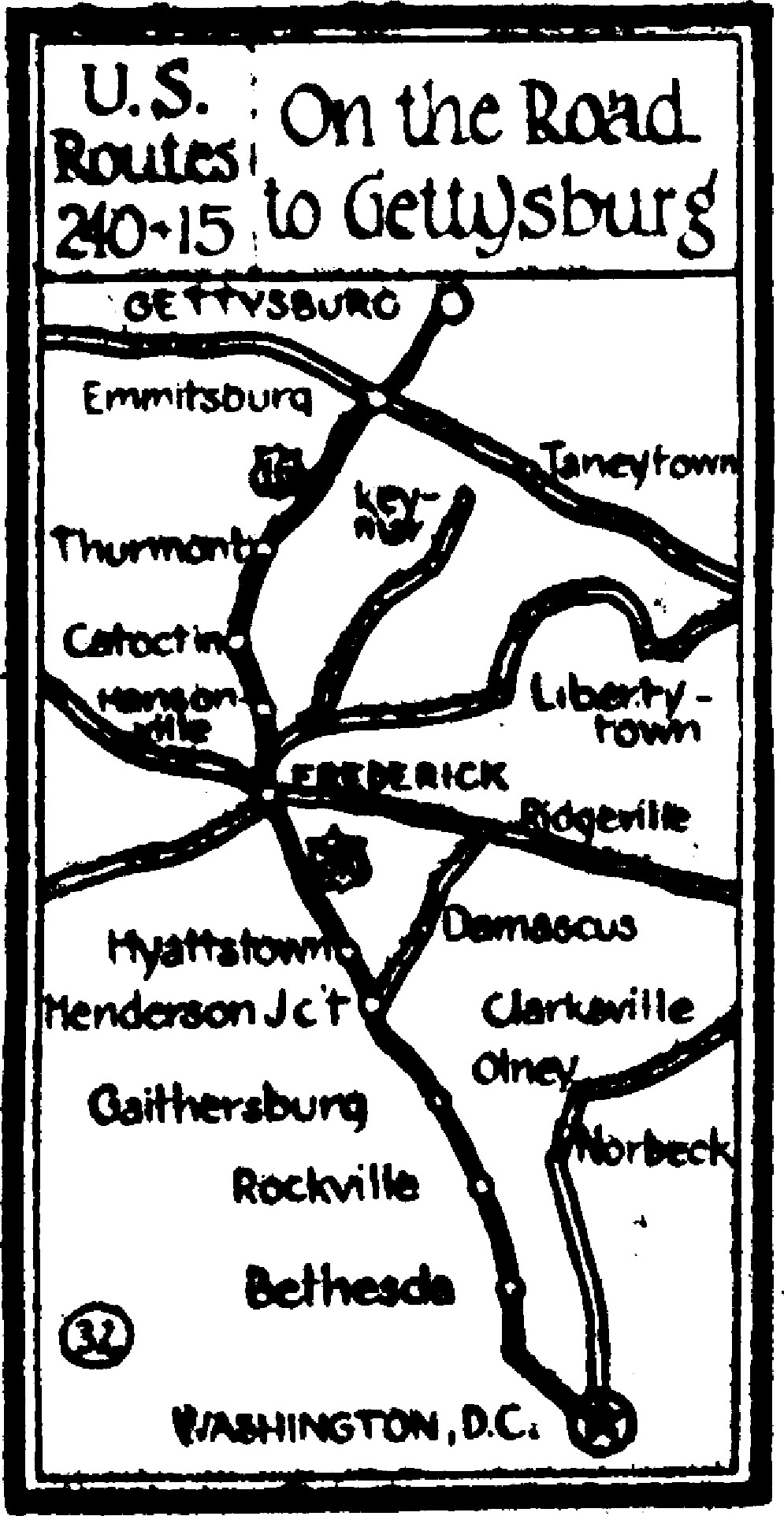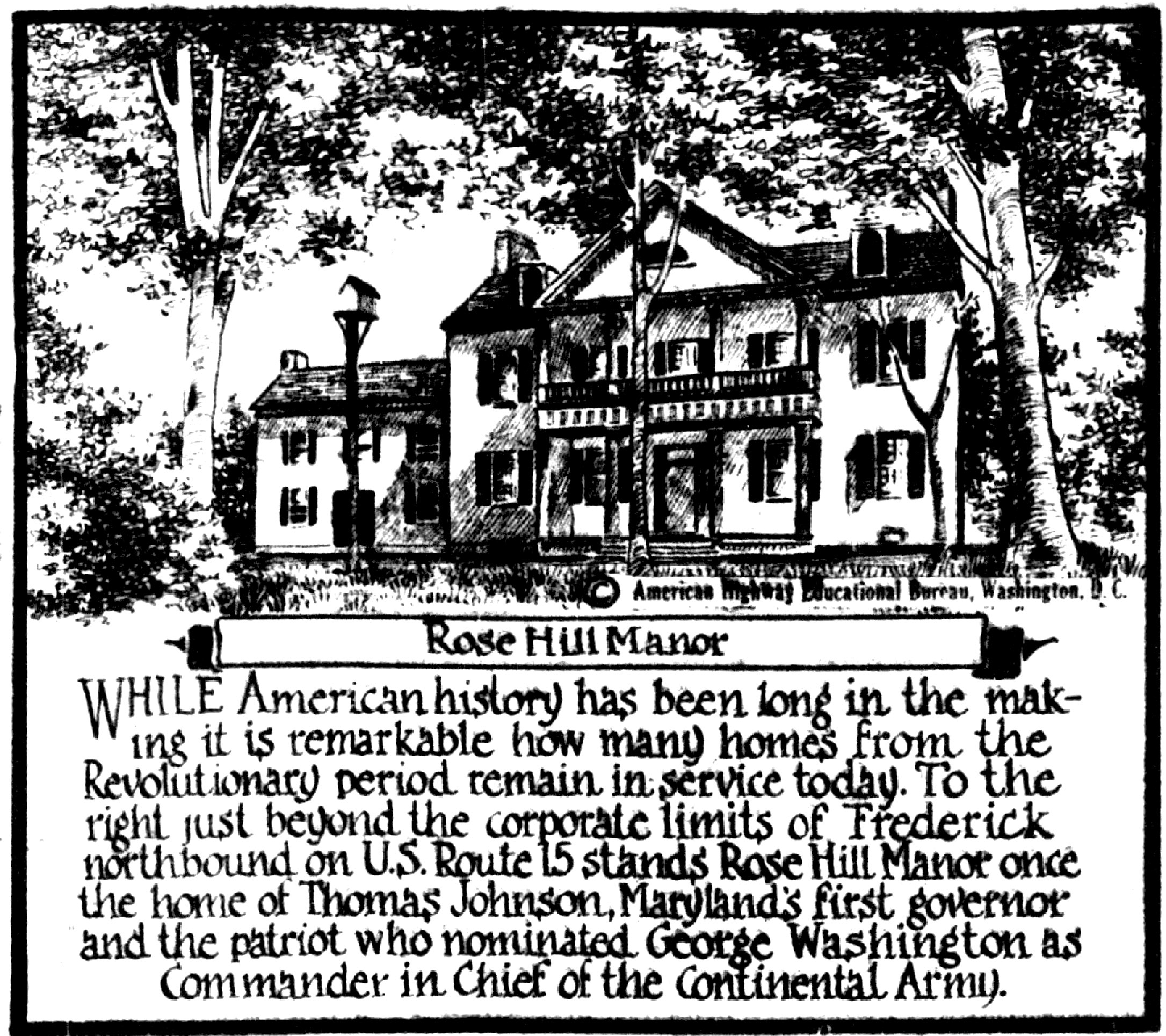The Sunday Star, Washington D. C., November 3, 1929—Part Four, Page 6.
American History by Motor
(Title registered U.S. Patent Office.)
— By James W. Brooks
(Sketches by Calvin A. Fader)

U.S. Routes 240-15: On the Road to Gettysburg


Rose Hill Manor
While American history has been long in the making it is remarkable how many homes from the Revolutionary period remain in service today. To the right just beyond the corporate limits of Frederick northbound on U.S. Route 15 stands Rose Hill Manor once the home of Thomas Johnson, Maryland's first governor and patriot who nominated George Washington as Commander in Chief of the Continental Army.

“Richfields”, Boyhood Home of an American Admiral
Here an American boy once sailed Armadas on the duck pond and looked wistfully down the road for the day when he could put out to sea. The Day came: thence in high service through great waters round the world, rescuer of Greeley and his surviving band from the icy North, hero at Santiago—Admiral Winfield Scott Schley. Richfields is seen to the right northbound, three miles north of Frederick.

Where Steel Making Began
Hard by the road which leads to Gettysburg and about twelve miles north of “Richfields” stands Catoctin Furnace, where the first steel in the United States was made. Iron was also moulded here for the “Monitor”, the world's first vessel made of iron.
American History by Motor, U.S. Routes 240-15: On the Road to Gettysburg, by James W. Brooks, (Sketches by Calvin A. Fader), The Sunday Star, Washington D. C., November 3, 1929—Part Four, Page 6.